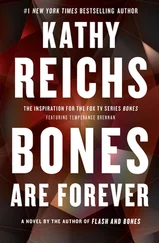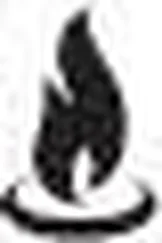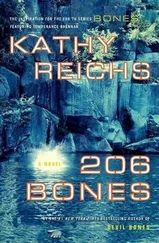I had one.
“Where will I perform my analysis?”
“At the hospital here on base.”
“I’ll need X-ray capability.”
“All arranged.”
I had another.
“Why couldn’t we do this today?”
“The army is providing transport. The Blackhawk is available tomorrow.”
Blanton started to speak. Welsted cut him off.
“Have a good one, people.”
Blanton shot to his feet and strode from the room.
I gathered my backpack and jacket and made my way outside. As I reached the sidewalk, Blanton was disappearing around a corner of the building.
“Dr. Brennan?”
I turned. Welsted was coming through the door.
“Do you have plans right now?”
“Got a date with a case file.”
“Are you qualified with a weapon?”
“I’ve done some shooting at Quantico, but—”
“I’m heading to the firing range. How about coming along?”
“Guns aren’t really—”
“A woman needs skills, especially over here.”
Taking my silence as assent, Welsted elbow-steered me toward the van that had brought us. During the drive, she exhibited an unsettling level of enthusiasm for, and encyclopedic knowledge of, firearms.
“You have your M16, M4 carbine, M27 automatic rifles. Sniper rifles like the M110, M40. The M1014 semiautomatic shotgun. Used by forces in Britain, Australia, Malaysia, Slovenia, the L.A. cops. Nice. Under a yard long. Less than nine pounds.”
Welsted had never met a weapon she didn’t like.
“I’ll stick to handguns,” I said.
“More useful stateside, if you get my meaning.” Welsted actually winked.
The range was open-air and located on the periphery of the base. Beyond the uprights serving as targets, past the outer fence, stretched mile after mile of barren rock and sand. In the far distance, a walled village rose like a tiny, wavery bump in the endless expanse.
“Be right back,” Welsted said after checking us in.
She was. With a weapon familiar to me.
“Beretta M9. Semi. Range of fifty meters. Fifteen-round detachable magazine.”
I took the Beretta. Remembered why I liked it. Not too large, not too heavy. Nice heft. Grip that felt good in my hand.
“Reuben will assist you. See you in sixty.”
Welsted moved to a target four down from mine.
Reuben was large and mustached, and definitely not a talker. He handed me earplugs and goggles, then set up a target and watched me shoot. After a few corrections to my grip and stance, he disappeared.
An hour after starting, I was leaving a tight circle of holes in the black bull’s-eyed human form.
I was removing my earplugs when Welsted reappeared, face flushed either from heat or excitement.
“Good?”
“Good,” I said.
Reuben materialized as Welsted called for the van. I handed over the Beretta and protective eyewear. Thanked him.
We were barely rolling when Welsted began punching keys on her mobile. Her end of the conversation suggested firming up of arrangements for the next day. Politeness was not the woman’s strong suit.
I checked my iPhone. No signal.
“Pain in the ass dealing with these people.” Welsted shoved the phone into a pocket of her fatigues. “Customs vary from tribe to tribe, subtle differences mostly. Pays to make sure everyone’s on the same page.”
“No surprises,” I said.
“It’s rare that a surprise here brings good news.”
General rule or personal recollection?
After another two calls, Welsted turned and jabbed a thumb toward the window.
“You gotta try the Green Bean. Awesome coffee.”
Except for the weapons, fatigues, and sign stating NO SALUTE AREA, I could have been viewing a gathering spot on any college campus.
Painfully young men sipped from paper cups in the shade of a gazebo. A couple held their heads close while reading something in their laps. A woman wrote alone at a picnic table, sun sparking her short brown hair.
Were the men just back from a convoy? Preparing to set out? Was the couple deciding what movie to see? Was the woman composing a postcard home?
In a year, how many would still be alive and intact?
My eyes began their reflex search for Katy.
And the guilt surged anew.
“Cup of java now?” Welsted asked.
“I should go back to my quarters and read the case file.”
And check for messages.
“Your call.”
Back in my room, I logged on to the dusty old PC. Found no word from either Katy or Blanton. No voicemail.
What the hell?
I checked my watch.
12:40.
I paced, agitated to be doing nothing. Anxious about my daughter.
I’d been at Bagram for twelve hours. Where was Katy? Why hadn’t Blanton located her?
More senseless back-and-forth across the floor.
Why hadn’t I brought Welsted into the loop?
I knew Katy’s unit. Could find her myself.
No, a tiny voice advised.
For once, I listened.
Pulling a bottle of water from the cabinet, I shoved aside papers and magazines, pulled the Gross file from my backpack, and began reading.
Very quickly, my eyes grew heavy. My mind refused to focus.
Thinking food and a little exercise might reinvigorate me, I set out for the DFAC.
Forty minutes and an epic salad later, I rounded the corner of my B-hut row. My pulse quickened at the sight of a pink paper wedged into the doorjamb of my unit. I hurried forward, hoping it was a note from Katy.
It was.
Can’t believe you’re here. Awesome! Off with unit today, tomorrow. Meet tomorrow night. Lighthouse Coffeehouse. 10 pm. (Too late for you, old lady? Tee hee!) No comments on my hair.
Katy
Yes!
With a lighter heart and renewed energy, I returned to the file.

FIRST I REVIEWED THE NAVAL Criminal Investigative Service Summary of Incident report. Skimming the boilerplate, I focused on the salient facts.
A cordon-and-knock operation in Sheyn Bagh led to a firefight during which two unarmed Afghan civilians were fatally shot. The shooter was Second Lieutenant John Gross. Gross radioed his BDA to company HQ, and upon return to FOB Delaram reported in greater detail to his company commander, Captain Wayne Hightower.
I had to think for a minute. Recalled from my work at JPAC that BDA meant battle damage assessment.
Hightower ordered Gunnery Sergeant Werner Sharp to interview all participants and reported the incident to battalion HQ. Interviewees told Sharp that the drive to Sheyn Bagh had taken thirty minutes. The convoy of five Humvees and one seven-ton armored truck arrived at sunset. Two of the Humvees were augmented with M2 .50-caliber heavy machine guns. Though historically a friendly village, intel had reported probable weapons caches and explosives stores. The platoon was on high alert.
Sheyn Bagh was bordered on three sides by a wall and on the fourth by a steep hill. The front wall had two gaps for passage from the road to the village, one at each end.
I glanced at the NCIS photos. The place looked like a scene from a Ray Bradbury novel.
Back to the summary.
Light was fading. Three Humvees pulled inside the compound, and two set up outside the wall, one near each opening. The seven-ton positioned between them.
Fire teams from second and third squads began banging on doors and rousting occupants, starting at opposite ends and working toward the middle. First squad deployed to protect the vehicles and to provide covering fire to the searchers.
Lieutenant Gross, armed with an M16 and an M9 Beretta, remained in front to command the operation and to provide additional covering fire. Gross directed Corporal Grant Eggers, a SAW gunner with first squad, to also remain at the front with his light machine gun.
Читать дальше











